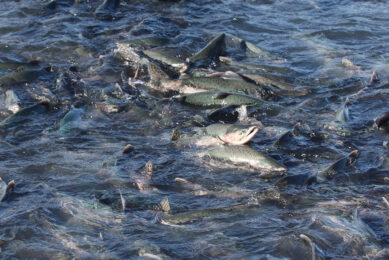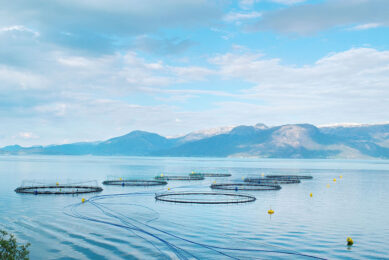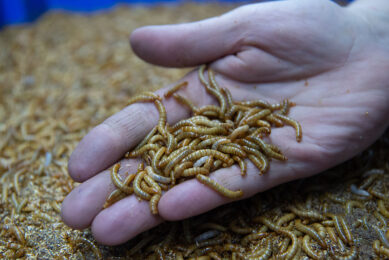Reducing feed costs by optimising nutrient utilisation
![[Photo: Nutriad]](https://www.allaboutfeed.net/app/uploads/2020/12/002_256_rb-image-2705813.jpeg)
Apart from optimising nutritional inputs and ingredient selection, aquaculture nutritionists have spent little attention on the optimal functioning of the digestive system of fish and shrimp. The knowledge gained for livestock is often not trivial due to the specific digestive physiology and nutritional requirements of fish and shrimp. In this article we delve into the potential to reduce the cost of feeding in aquaculture by the application of species-specific feed additives to enhance the efficiency of digestive and metabolic processes.
A wide variety of concepts and products is being investigated for improving digestion and feed utilisation in animal nutrition. Potential products for application in fish include botanical extracts and phytobiotic compounds, short and medium chain fatty acids, organic acids, enzymes, and natural emulsifiers. However, it is difficult to predict the functionality of many of these products for a wide range of fish species, covering carnivorous/omnivorous/herbivorous feeding habits, marine/freshwater habitats, cold/tropical climates, and extremely different feed formulations. At Nutriad, a continuous program of empiric screening for important aquaculture species aims at identifying promising compounds for application in aquaculture (Figure 1). Nutriad research has mainly focused on compounds which are heat-stable in order to facilitate application under practical processing conditions for aquafeed. In omnivorous fish such as tilapia and catfish, digestive aids have shown interesting results to improve nutrient utilisation from cheap ingredients and improve economics of farming and filet processing. For carnivorous fish such as marine fish and trout, digestibility enhancers adjust for decreased digestibility, particularly of dietary fat and energy, for fish fed feeds containing low levels of fish meal and high levels of vegetable proteins. In the next sections, we illustrate the potential of digestive/metabolic enhancers with some of our work done with Nile tilapia.
Most efficient dosage
Dose-response trials under lab conditions provide useful data to explore the most cost-efficient dosage of novel feed additives to be recommended for field verification. The supplementation of 1.5 kg per MT of feed of a digestive aid yielded significantly better FCR (-5%), growth (+4%) and protein efficiency ratio (+4%; Table 1), and increasing the supplementation from 1.5 kg to 3 kg per MT of feed further improved these efficacy. The decreased viscerasomatic and hepatosomatic indexes and increased protein efficiency ratio indicated that more dietary energy/protein is released by the use of the digestive enhancer.
Traditionally, dietary non-protein energy sources, such as carbohydrate or lipid have been demonstrated to spare the protein for tilapia. However, the common carbohydrate sources also show low digestibility due to the high fibre content, whereas high lipid levels tend to cause fatty fish. Therefore, feed additives which can improve nutrient utilisation have a potential to promote protein sparing in tilapia and reduce the feed cost per kg of fish and/or filet produced. A study performed at the National Pingtung University of Science and Technology, Taiwan demonstrated that tilapia fed 2% less protein and supplemented with a digestive/metabolic enhancer, showed even better performance in terms of growth, FCR, PER, protein retention and fileting yield compared to control fish (Lin and Wu, 2014). Furthermore, fish fed the enhanced low protein diet showed lower levels of visceral fat and plasma triglycerides, but enhanced G6PDH activity, which indicated effects on lipid and carbohydrate metabolism. The metabolic effects can explain the release of non-protein energy, which in turn results in protein sparing and more effective utilisation of protein for muscle growth.
Economics under field conditions
The optimal application of digestive/metabolic enhancers requires field evaluations to provide information on optimal dosage at different life stages of the fish, possible interactions with feed quality and their effects on processing qualities of the fish. Sampaio-Gonçalves et al. (2012) evaluated the effect of the dosage and feed quality on the efficacy of a digestibility enhancer for tilapia during a production cycle in cages in Brazil. The best results were obtained by supplementing the control feed throughout the production cycle with 3 kg/MT of the feed additive, resulting in improved survival (+2.8%), daily weight gain (+5%), feed conversion (-6.4%), fileting yield (+1.5%), visceral fat deposition (-9.9%), hepatosomatic index (-22%), and viscerosomatic index (-10.7%). Reducing the additive inclusion from 3 to 1.5 kg/MT from 350g fish onwards, still resulted in interesting benefits on growth, feed conversion and visceral fat but did not affect fileting yield. The optimal additive treatment improved farm revenues with 17% compared to the unsupplemented control group and showed a return on investment (ROI) of 3.8:1. Reducing the additive inclusion to 1.5 kg/MT of feed once fish reach 350 g still resulted in 7% improved revenues compared to the unsupplemented control group and a ROI of 2.1:1. The low cost feed performed significantly worse compared to the control feed in most parameters, particularly in terms of survival, feed conversion and fileting yield. The addition of 2 kg/MT of the feed additive was only capable of improving growth but the nutritional impact of reducing the protein digestibility and amino acid balance in this feed heavily affected the overall performance, particularly FCR and survival. This resulted in 10% reduced revenues compared to control and showed the importance of maintaining the nutritional balance in the feed in order to maximise the benefits of a digestibility enhancing concept.
Conclusions
Current aquafeed formulations are mainly focused on nutritional specifications and ingredient choice, whereas the optimal utilisation of the nutrients by the fish is rarely taken into account. In this article we showed that there is a need for specific product development searching for digestive aids which are compatible with the digestive physiology of each fish species and type of feed formulation.
References are available on request from the author (p.coutteau@nutriad.com).
Join 26,000+ subscribers
Subscribe to our newsletter to stay updated about all the need-to-know content in the feed sector, three times a week. Beheer
Beheer









 WP Admin
WP Admin  Bewerk bericht
Bewerk bericht